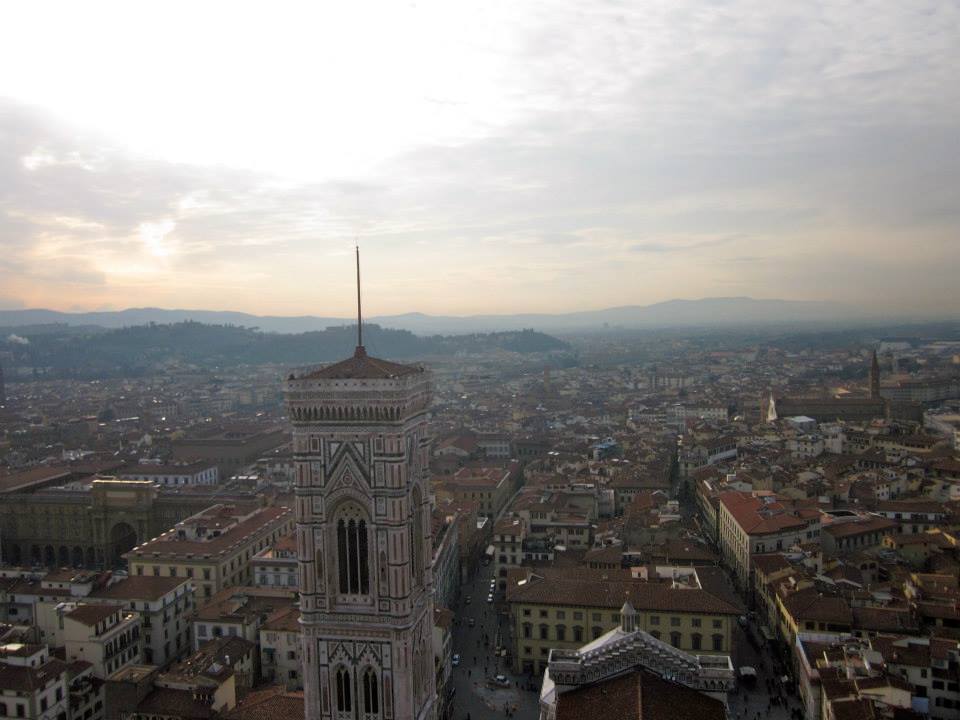Tuscany : Overview
In 1348 the Black Death swept across the Italian Peninsula, but the region of Tuscany suffered considerably as a result of the plague. The three major cities of Florence, Pisa and Siena, prior to the plague, experienced a series of unfortunate events leading up to the cataclysmic Black Death that resulted in incredibly high mortality rates. Tuscans were uncertain and frightened about their future, turning to religious imagery to provide some stability in this characteristically unstable time.
At the turn of the 14th century Florence was a city of unrivaled economic, political and social prosperity. Their position on the Arno River enabled them to exploit the abundant natural resources of the Italian landscape, which lead to Florence becoming a major center for manufacturing. As business increased, Florentine nobility entered the professions of both trade and banking, making Florence a center for finance as well. These wealthy merchant banking families ultimately belonged to the Art Maggiori, the most prominent guild within Florentine society, which solidified both their economic and political prominence. Unfortunately, for many, this period of supremacy came at great cost. Due to the influx of immigrants coming into the city, the urban poor started to grow, comprising about ten percent of the population. In response, new forms of religion focusing on poverty in conjunction with preaching had begun to emerge as early as the beginning of the 12th century. In Florence this new focus on helping the urban poor manifested itself within the Mendicant churches of both the Franciscans and Dominican orders.
By the mid-14th Century, Florentines were entering a difficult and frightening time in the city. Not only was there flooding, famine and uprising, but in 1343, after political hardship with Milan and economic hardship after the failure of two branches of the largest Florentine banks, essentially ever mercantile bank and company declared bankruptcy. After this economic downturn, in 1346 and 1347 all of Tuscany experienced two years of entirely failed or badly damaged crops. Disheartened, the Florentine people attempted to appease God with public prayer because they ultimately believed their misfortunes were tied to God's will. In the summer of 1348 the Black Death spread throughout Italy, and the brunt of God's wrath was truly felt by the Florentine people. As a result, the people of Florence turned to piety and religious imagery, commissioned extravagant religious art, and cracked down on those deemed immoral or unchristian to cope with the persistent fear of death and attempt to regain God’s favor. While many of the city’s industries were crumbling, churches and other religious organizations were thriving due to this fervently increased piety that fear of the Plague generated among Florentine citizens. This infamous endemic had lasting effects on all facets of life; including government, culture, society, and naturally the arts. This exhibit displays but a few examples of artistic pieces that were influenced in some way by the Black Plague.
As a port city Pisa was one of the first cities in Italy to come in contact with the plague in 1348. It quickly spread from Pisa and Genoa to the many surrounding cities in Tuscany. The plague was just one in a series of disastrous events for Pisa, which in the previous century had been a very wealthy and powerful city. It experienced one of the worst floods in its history in 1333 when the River Arno flooded killing thousands, and was at constant war with neighboring cities including Florence and Genoa. Many Pisans reacted to the plague with a revitalized faith in religion. This is evident in much of the post-plague art from the city.
Just like many other cities in Italy, Siena was hit extremely hard by the 1348 outbreak of the plague, losing the majority of it's population. The city had it's own distinct artistic style pre-plague that combined both Italian elements with a large French Gothic influence. This can easily be seen in the architecture, as well as in the magnificent altarpieces by Duccio and Simone Martini. However, post-plague, Siena's government, economy and population never fully rebounded from this disaster.

